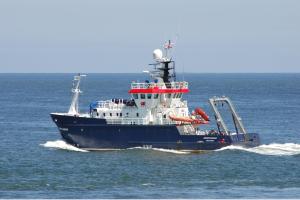
Understanding the Relationship Between Offshore Wind Energy and Ocean Ecosystems
As renewable energy sources gain prominence in the global effort to combat climate change, offshore wind energy has emerged as a vital component of the United Kingdom’s energy strategy. Bangor University, renowned for its marine research initiatives, is at the forefront of exploring how these large-scale wind farms influence ocean productivity and marine biodiversity. This article delves into the latest scientific studies and innovative approaches undertaken to evaluate the environmental impacts of offshore wind developments, focusing on their potential to enhance or threaten marine ecosystems.
Offshore Wind Energy in the UK: A Rapidly Growing Industry
The UK has made significant advancements in harnessing offshore wind power, now accounting for approximately 30% of the nation’s electricity generation in 2024. The industry has transitioned from shallow coastal sites to deeper waters, deploying floating wind farms in regions previously unsuitable for fixed turbines. This technological evolution has positioned the UK as a global leader in floating wind technology, with projects like the Kincardine and Hywind wind farms off eastern Scotland exemplifying this progress.
While offshore wind offers a promising path to facilitate net-zero targets and reduce carbon emissions, it also raises questions about the ecological consequences of such installations in these dynamic environments. Bangor University’s research vessel, the RV Prince Madog, is instrumental in studying these impacts firsthand, providing critical data on oceanographic changes induced by wind farm operations.
The Science Behind Ocean Productivity and Marine Biodiversity
Ocean productivity primarily depends on the availability of nutrients, which are often found in the cooler, nutrient-rich deeper waters. The surface waters, warmed by the sun, tend to be nutrient-poor, limiting plankton growth—the foundation of marine food webs. Therefore, understanding how offshore wind farms influence nutrient distribution and water mixing is essential for assessing their environmental footprint.
Recent research suggests that the turbulence generated by tidal currents flowing past floating wind turbines can induce mixing, bringing vital nutrients from the deep to the surface. This process has the potential to increase plankton productivity, which benefits the entire marine ecosystem, including fish stocks and biodiversity. Bangor University’s interdisciplinary teams are exploring whether these effects can counteract the predicted decline in ocean productivity caused by climate change-induced warming.
Innovative Research Methods: Combining Satellite Data and Marine Surveys
To evaluate the impact of offshore wind farms on ocean health, scientists utilize a combination of satellite remote sensing, ship-based surveys, and new measurement techniques. Satellite imagery from the past year reveals that turbulent wakes downstream of wind farms are associated with cooler surface waters, likely due to the upwelling of nutrients. These observations support hypotheses that wind-induced mixing could enhance biological productivity.
Bangor University’s marine scientists, led by Dr. Ben Lincoln, deploy survey ships like the RV Prince Madog to collect sonar data and water samples around wind farm sites. Their studies focus on quantifying turbulence, nutrient transport, and plankton abundance. Parallel to these efforts, researchers are developing novel methods of measuring sea temperature via the high-voltage cables connecting wind turbines to the power grid. Professor Justin Dix highlights how these measurements can help track long-term changes in sea stratification and ocean health.
Potential Environmental Benefits and Challenges
The concept that offshore wind farms could positively influence ocean productivity is an exciting prospect for marine conservation and fisheries management. Enhanced nutrient mixing might bolster plankton blooms, improving habitat conditions for a variety of species. Such natural fertilization processes could mitigate some effects of ocean warming, which diminishes productivity and biodiversity.
However, there are significant challenges and uncertainties. The degree of turbulence and nutrient transport varies depending on water depth, tidal strength, and turbine design. Excessive turbulence could disrupt sensitive species or habitats, and the long-term ecological impacts remain to be fully understood. Bangor University emphasizes the importance of ongoing monitoring and adaptive management strategies to ensure that offshore wind development aligns with conservation goals.
Implications for Marine Biodiversity and Fisheries
Marine biodiversity is intricately linked to ocean productivity. If wind farms inadvertently promote nutrient cycling and plankton growth, they could serve as artificial reefs, attracting fish and supporting local fisheries. Conversely, if turbulence leads to habitat degradation or species displacement, the ecological balance could be threatened.
Researchers are collaborating with policymakers to develop guidelines that maximize environmental benefits while minimizing potential risks. The integration of scientific data from Bangor University and other institutions ensures that offshore wind expansion proceeds sustainably, safeguarding marine biodiversity for future generations.
Looking Ahead: The Role of Scientific Research in Sustainable Offshore Wind Development
The ongoing research by Bangor University and partners exemplifies the vital role of science in guiding sustainable energy infrastructure. By understanding how floating wind farms interact with ocean environments, stakeholders can optimize turbine placement and design to harness benefits like increased productivity without compromising ecosystem health.
If you are interested in the future of marine energy and ecological conservation, exploring programs at Bangor University such as marine sciences, renewable energy, and environmental management can provide valuable pathways. The university’s commitment to interdisciplinary research ensures that technological innovation aligns with ecological preservation.
Get Involved and Learn More
For academics, industry professionals, and environmentalists eager to contribute to sustainable offshore energy solutions, Bangor University offers cutting-edge resources, research opportunities, and collaborations. Staying informed about the latest findings can help shape policies and practices that support both renewable energy development and ocean health.
Want to explore more about marine renewable energy and environmental sustainability? Visit the Bangor University website or contact the university’s marine research department for detailed insights and partnership opportunities.
Take the next step in supporting sustainable marine environments: join our research community or enroll in relevant programs to contribute to this vital field.

